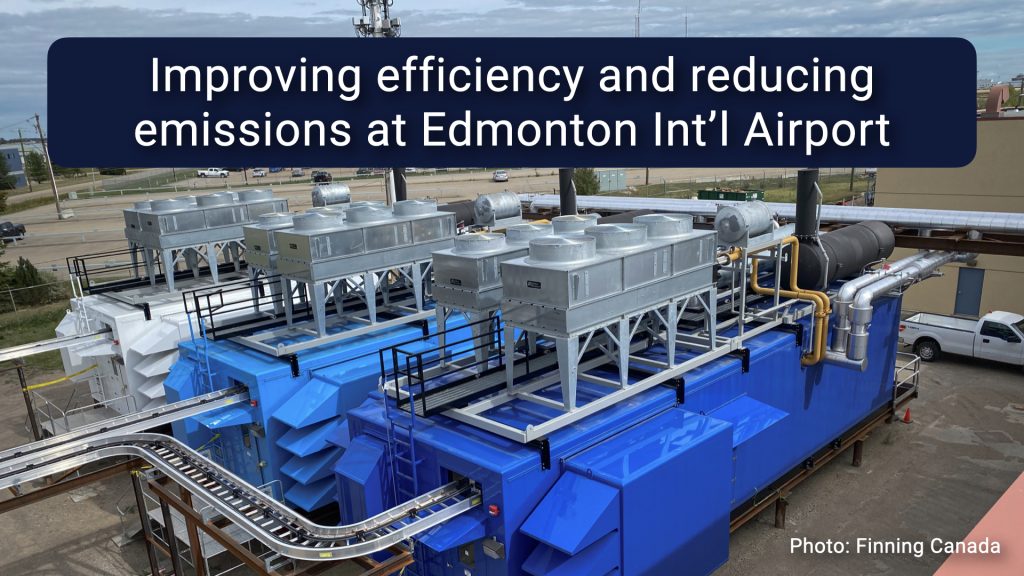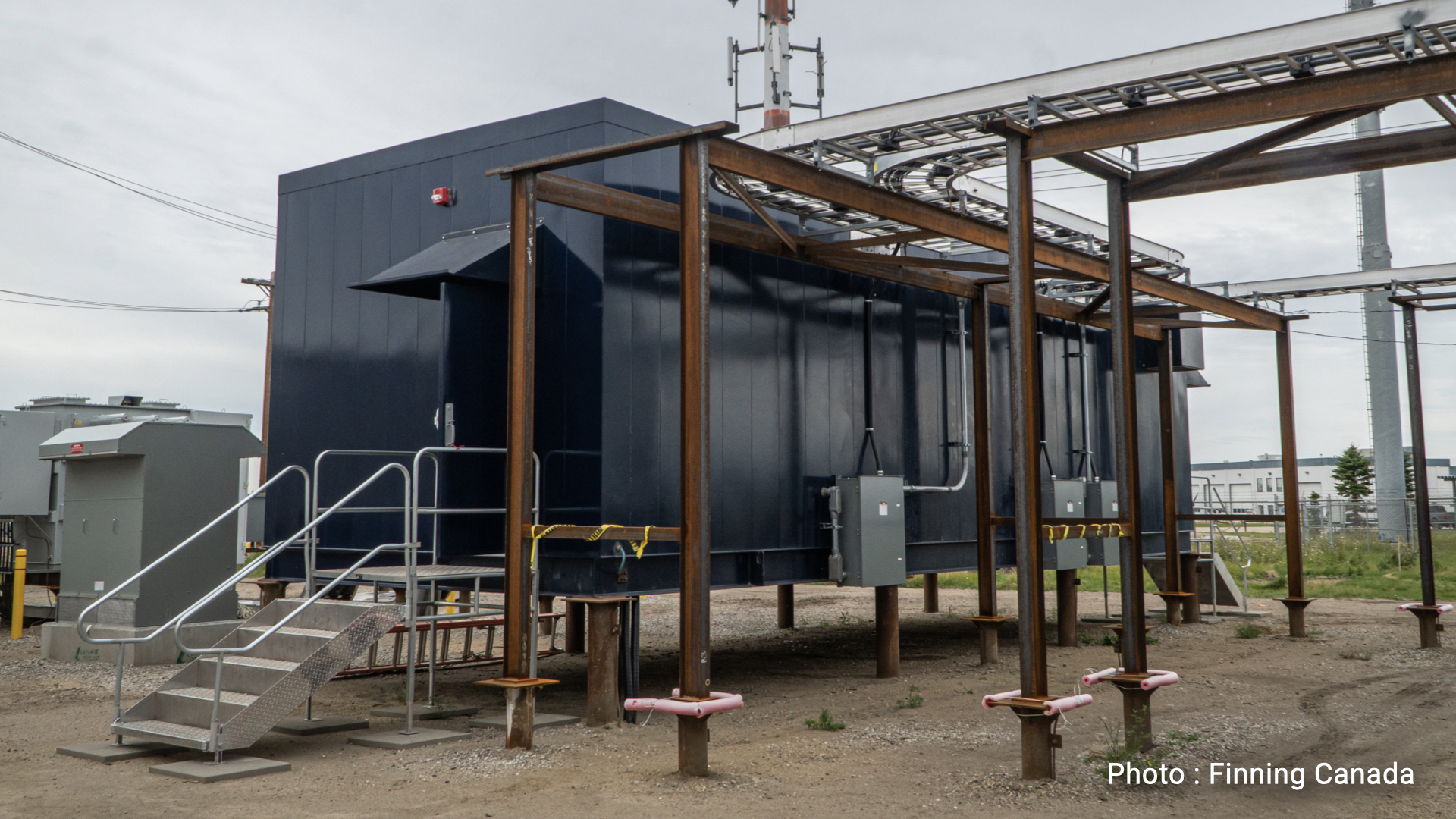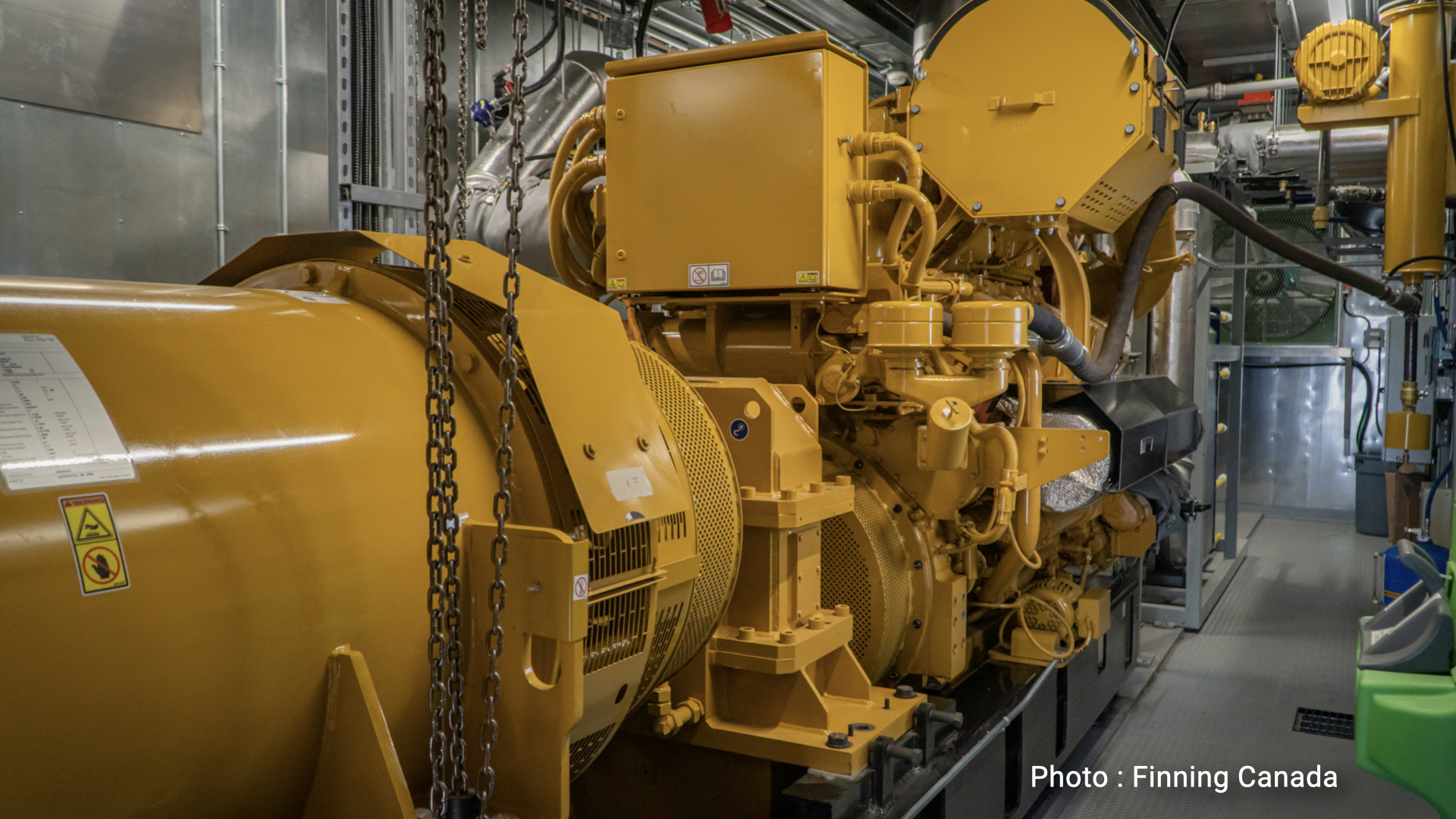
Features
Net Zero
News
Improving efficiency and reducing emissions at EIA
July 27, 2022 By Dan Tuan
 The genset enclosures were designed locally and manufactured in Canada to withstand harsh climate conditions. Photo: Finning Canada.
The genset enclosures were designed locally and manufactured in Canada to withstand harsh climate conditions. Photo: Finning Canada. July 14, 2022 – Greater energy efficiency, reliability and lower costs are top priorities for powering any business. Since nearly two-thirds of the energy used by conventional electricity generation is wasted in the form of heat discharged to the atmosphere, CHP is a solution that can offer huge benefits in efficiency.
Also known as “cogeneration”, combined heat & power systems produce two forms of energy—heat and electricity—from a single source. They are designed for continuous operation, maximizing uptime and reliability while reducing ownership and operating costs. When fuelled by natural gas, CHP systems also help reduce emissions.
Solutions that offer lower emissions while being are affordable and reliable are propelling a growing interest in non-traditional CHP markets, such as urban industrial settings, hospitals, ski resorts, remote northern climates and airports.
Seeking a solution for power and heat redundancy
“We need electricity redundancy, and heating redundancy,” explained Steve Maybee, vice-president, Operations & Infrastructure, with Edmonton International Airport. “We need a guarantee of power to our airfield and to our building. So finding ways to produce that power in a sustainable way was always something that we were looking for. It all came together at the right time and […] we made that decision, with the right business case to move it forward.”
So the airport decided to proceed with a combined heat & power (CHP) solution which, besides providing electricity redundancy, would also provide heating redundancy for EIA’s hot water system.
“The generators supply electricity, and the waste heat from the engine is used to power the facility’s hot water circuits,” said Chris Schurmans, Finning’s project development manager who worked with EIA on its customized power generation system.
“Because we are capturing the heat from the generation of electricity and using that heat, we are utilizing 85% total efficiency of the energy input, 45% electrical efficiency and close to 40% thermal efficiency,” Schurmans continued. “Having a solution like this offsets the need for water boiler use onsite, which reduces natural gas consumption while at the same time offsetting less-efficient utility power generation, such as coal plants. A benefit that reduces both emissions and costs.”
“Cogen is designed to provide a baseload of power and heat,” explained Roger Steele, EIA’s manager, Technical & Utilities. “So it doesn’t supply all the heat or all the power to the terminal building. It provides a baseload at a very economical cost.”
The system provides a baseload designed around an overall load profile, which varies hour to hour, day to day, and season to season. The outcome drives an economical model that helps identify the utilization and cost perspective.
“We have three enclosures onsite containing the generators, and one electrical house [a.k.a. eHouse] containing the switchgear,” said Karl Taylor, manager, Commissioning & Product Health, with Finning Power Systems.

The eHouse (a.k.a. electrical house) contains the switchgear and control system, which interconnect and distribute the heat & power source to the airport. Photo: Finning Canada.
“Designing a project like this is a collaborative effort with the customer,” added Schurmans. “We wanted to make sure the customer was getting what they were looking for, and we understood that they required options when sourcing power generation solutions.”
The system comprises three (3) Enclosure Packaged Cat G3512H natural gas, high-efficiency generator sets, which generate 1.4 MW at 4160V each. The units are integrated with the airport distribution via the eHouse (a.k.a. electrical house) which contains the switchgear and control system, via two transformers and distribution feeds.
The genset enclosures were designed by Finning and locally engineered and manufactured to withstand harsh climate conditions. Everything was customized for the customer’s specific application, including the heat recovery, controls and switchgear, and site-specific sound attenuation.

There are three (3) gensets, each generating 1.4 MW at 4160V. Photo: Finning Canada.
Serving as a springboard for others
Although cogeneration is not a new idea, there are applications where it makes a stronger case from a cost and energy efficiency perspective.
“We’re getting the green benefits; we’re getting the redundancy and resiliency; and we’re also getting the utility savings,” added Steele. “The net is almost $1 million per year. That is really going to help with the payback of these units.”
“The more we looked at it, the better the business case became. It is the perfect fit for our airport,” said Steele. “We are really hoping that this project is the springboard for others in Alberta to look at this technology for use in new or existing buildings.”
The CHP plant is expected to cut the airport’s annual carbon emissions by roughly 20% (approx. 7000 to 8000 tonnes CO2e per year) and reduce the airport’s energy costs by about $800,000 per year.
Cogeneration has not been used a lot in Alberta, continued Steele. “So we’re happy to be innovative within Alberta, showing that this can happen in Alberta [with] jobs for Albertans, and is green for the environment.”
“Having this cogeneration facility, which uses Alberta’s natural gas to produce power, and then use the waste heat generated to heat our terminal building is a win-win all around for us,” concluded Maybee.
Dan Tuan is the director of Power Systems with Finning Canada. He has been with Finning for 21 years, including 18 years in Electric Power Generation. He is also a member of the Advanced Energy Advisory Board of North America, and has served the primary power generation market segments in marine, mining, mission critical and renewable energy.
To further your understanding of CHP systems, and how they can improve efficiency and reduce emissions, check out Using CHP to improve efficiency and reduce emissions, also by Dan Tuan, published in Electrical Business Magazine.
Print this page